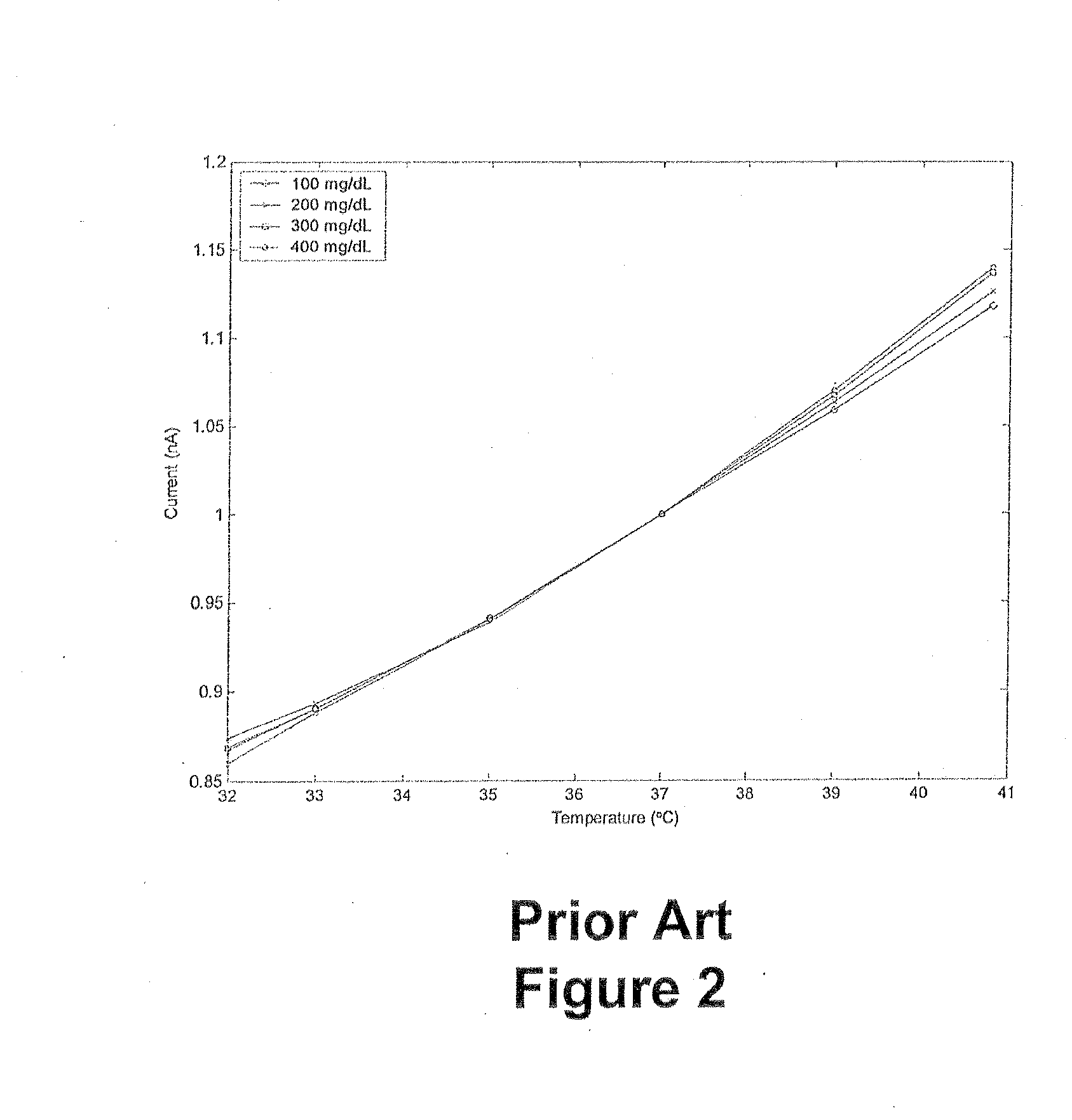Temperature compensation for enzyme electrodes
a technology of temperature compensation and enzyme electrodes, applied in the field of temperature compensation of enzyme electrodes, can solve the problems of inaccurate measurement, unnecessary corrective treatment errors, and change in temperature of the surrounding environmen
- Summary
- Abstract
- Description
- Claims
- Application Information
AI Technical Summary
Problems solved by technology
Method used
Image
Examples
Embodiment Construction
[0027]A sensor electrode operable in an environment with varying temperature is provided. The sensor provides glucose measurements with acceptable accuracy for clinical setting, specifically to guide therapy. The sensor may be used in an access device, such as a catheter, for both venous and arterial environments. The catheter may be configured to allow for the infusion of fluid. The fluid may infuse into the body at a temperature different from the body temperature.
[0028]FIG. 4 illustrates an example of a catheter 11 (e.g., a glucose monitoring catheter). FIG. 5 is a cross-sectional view of the catheter 11 of FIG. 4. FIG. 10 is a cross-sectional view of a sensor (e.g., an enzyme electrode or a glucose electrode or sensor) with a temperature sensing device or temperature compensation element 15. The catheter 11 has at least one opening 12 that exposes one or more sensor electrodes 13. In an embodiment, underneath the sensor electrodes 13 is a temperature sensing device, such as a th...
PUM
| Property | Measurement | Unit |
|---|---|---|
| temperature | aaaaa | aaaaa |
| temperature | aaaaa | aaaaa |
| temperature | aaaaa | aaaaa |
Abstract
Description
Claims
Application Information
 Login to View More
Login to View More - R&D
- Intellectual Property
- Life Sciences
- Materials
- Tech Scout
- Unparalleled Data Quality
- Higher Quality Content
- 60% Fewer Hallucinations
Browse by: Latest US Patents, China's latest patents, Technical Efficacy Thesaurus, Application Domain, Technology Topic, Popular Technical Reports.
© 2025 PatSnap. All rights reserved.Legal|Privacy policy|Modern Slavery Act Transparency Statement|Sitemap|About US| Contact US: help@patsnap.com



